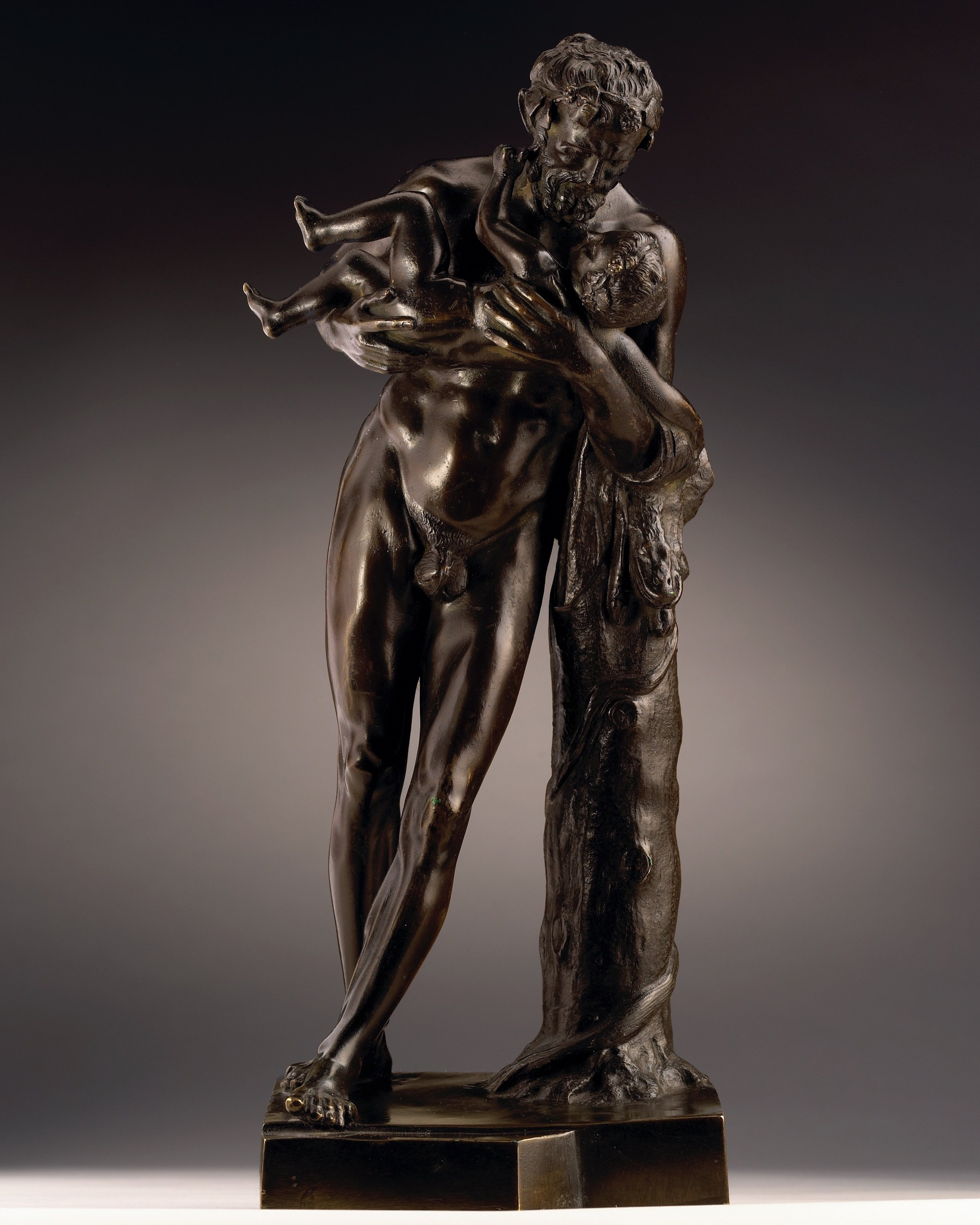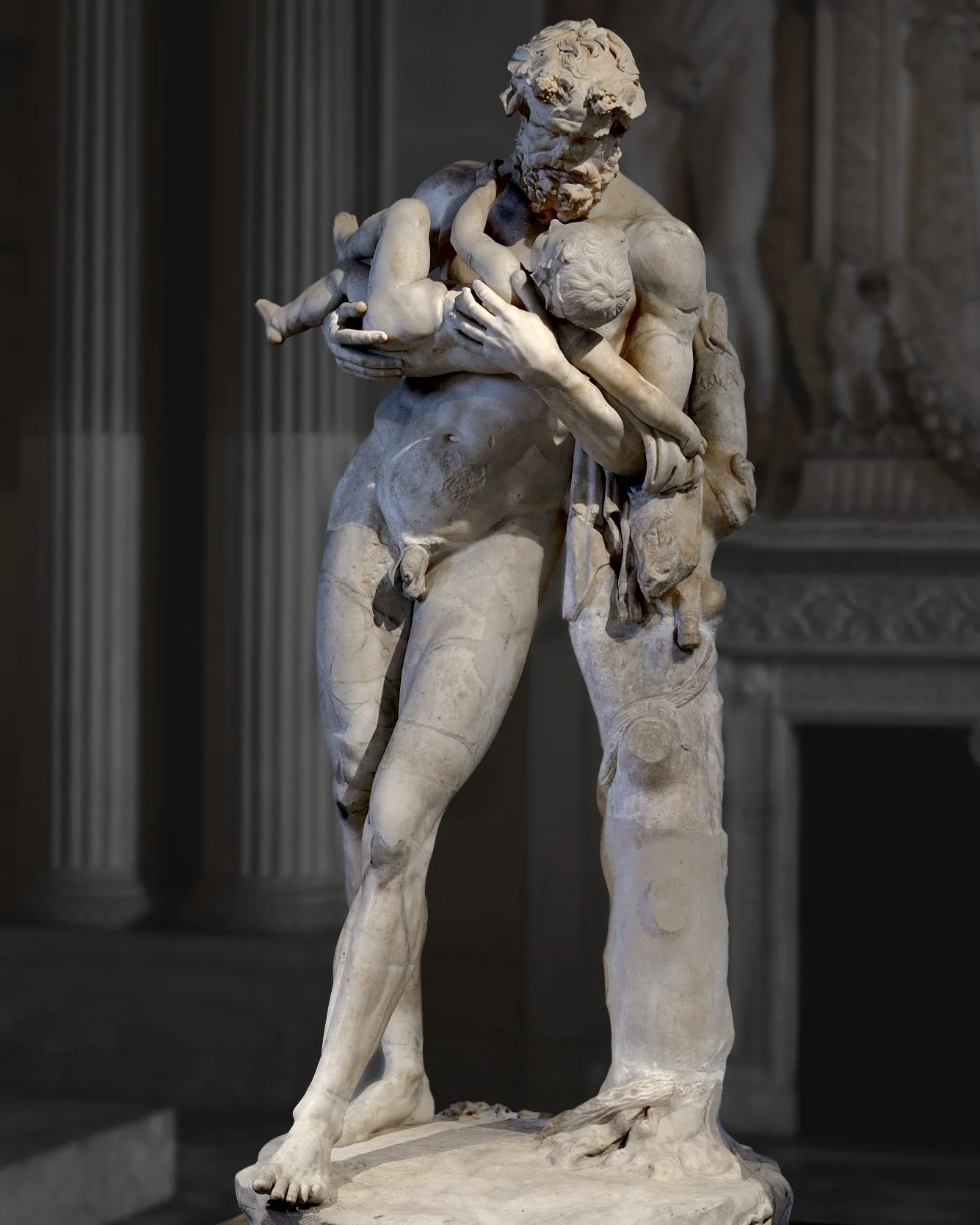Silenus with the infant Bacchus
(After the antique)
Rome, late 18th century
Bronze
34 cm high
£6, 750


According to Greek mythology, Mercury had entrusted Silenus, a satyr and Demi-god, with raising the infant Bacchus, son of Jupiter and Semele. The present bronze is a reduction of a Roman Imperial marble statue, now in the Louvre museum (inv. MR346), considered by scholars to be a copy of a 4th century BC bronze by the Greek master Lysippus. The Louvre marble was unearthed, before September 1569, on the site of the gardens of Sallust and was subsequently acquired by Cardinal Scipione Borghese before 1613. In 1807 it was purchased by Napoleon Bonaparte from his brother-in-law Camillo Borghese (1775-1832) and transferred to the Louvre shortly afterwards.
Admired for both its anatomical mastery and the endearing nature of its subject, the Silenus was widely reproduced from a very early stage. In the 1570s, Cardinal Ferdinando de'Medici (1549-1609) commissioned a bronze cast of it, now in the Uffizi. A plaster version was made for Philip IV of Spain (1605-1665) in 1650, and in the late 17h century models in both marble and bronze were executed for Versailles. Throughout the 17th and 18th centuries, small bronze replicas such as the present one were in high demand amongst Grand Tourists and could be acquired in Roman workshops such as the ones of Francesco Righetti and Giacomo and Giovanni Zoffoli. In England, larger bronze versions of Silenus with the infant Bacchus can be seen today at Syon House, Petworth House and Woburn Abbey.
RELATED LITERATURE
F. Haskell and N. Penny, Taste and the Antique, New Haven & London, 1981, p. 307, no.
77.
